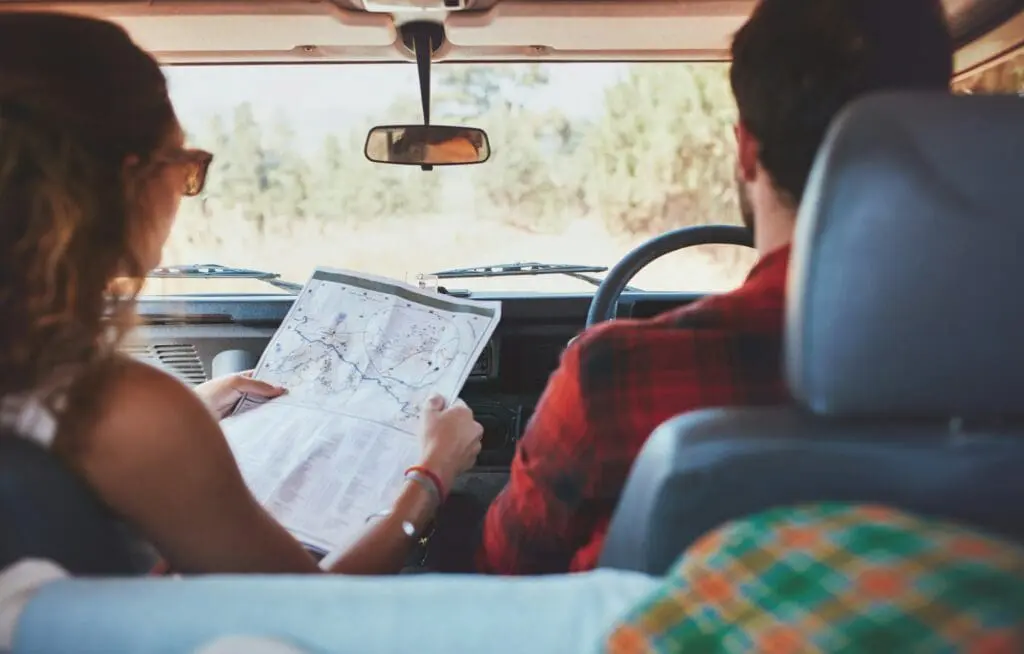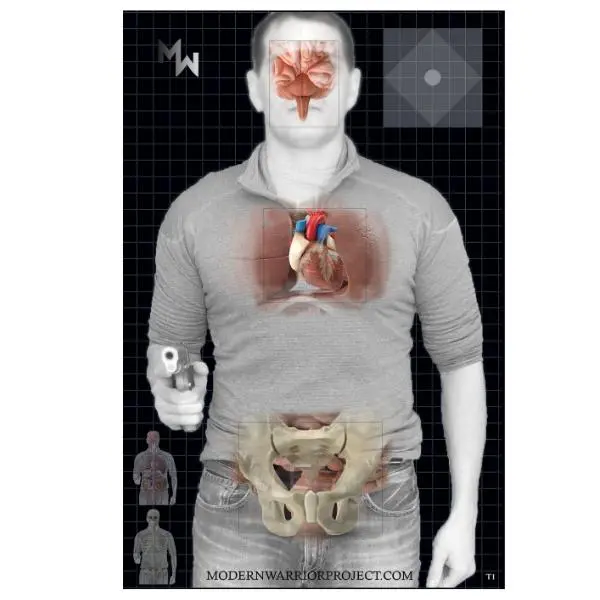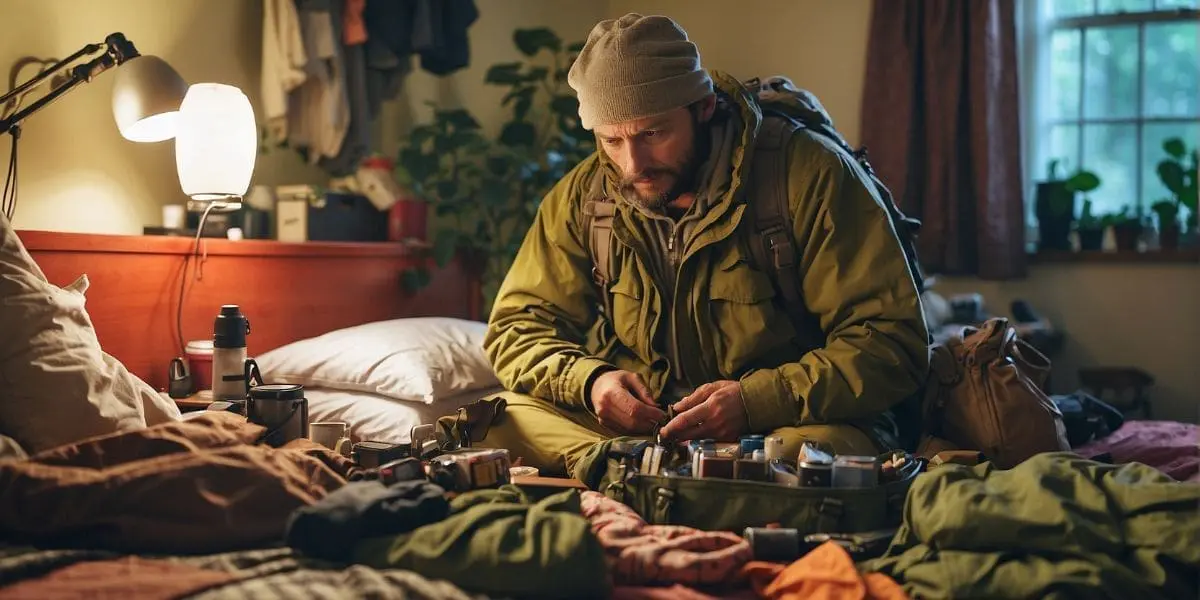Introduction
When chaos knocks at your door, will you answer with preparedness or panic? The Modern Warrior Project provides invaluable resources for those who choose the former. Preppers, with their bug out tips and survival strategies, have a leg up when disaster strikes.
In this guide, you will learn:
- The importance of bugging out and why it matters.
- How to create a foolproof bug out plan based on potential threats.
- The essential gear you need that could be a matter of life and death.
- How to select the best bug out location and vehicle for your survival.
- The navigation skills you must master to survive in unknown areas.
Understanding Bugging Out: The Ultimate Prepper’s Guide
Let’s cut to the chase. “Bugging out” is the act of leaving your current location on short notice due to an emergency situation, and it’s not just for doomsday enthusiasts. When disaster strikes, having a well-thought-out bug out plan can be the difference between life and death.
Bug Out vs. Relocating
At first glance, bugging out might seem like relocating, but they’re worlds apart. Relocating involves moving to a new place permanently or for an extended period under normal circumstances. Think job transfer or seeking a better climate.
Bugging out, on the other hand, is usually temporary and always urgent. You’re not leisurely packing your fine china; you’re grabbing essentials and getting out fast when immediate danger looms—think natural disasters, civil unrest, or even a zombie apocalypse if that’s your thing.
Why Being Prepared Matters
Emergencies are unpredictable. Being caught off guard can put you in a precarious situation quicker than you can say “Where’s my bug out bag?” Preparation isn’t about paranoia; it’s about prudence.
- Natural Disasters: Earthquakes, hurricanes, wildfires.
- Man-Made Catastrophes: Industrial accidents, terrorist attacks.
- Societal Collapse: Economic collapse, large-scale civil unrest.
Each scenario requires different actions and resources. A prepper doesn’t just stockpile food; they anticipate threats and plan accordingly.
Rugged GPS Handheld with inReach Satellite Technology, Two-Way Messaging, Interactive SOS, Mapping
Bugging Out vs. Bugging In
Another crucial distinction: bugging out vs. bugging in. Bugging in means staying put and fortifying your home against threats—ideal when your location is safe and supplies are ample.
Bugging out becomes necessary when staying put puts you at greater risk than hitting the road. Knowing when to execute either strategy is crucial for survival.
“By failing to prepare, you are preparing to fail.” — Benjamin Franklin
Creating an Effective Bug Out Plan: Strategies to Stay One Step Ahead
Steps to Develop an Effective Bug Out Plan
Creating a bug out plan isn’t about scribbling some random notes and calling it a day. It’s about crafting a comprehensive strategy that could mean the difference between survival and chaos. Here’s how you can do it:
- Assess Your Current Situation: Know your strengths, weaknesses, resources, and liabilities.
- Identify Potential Threats: Consider natural disasters, civil unrest, economic collapse, and other scenarios.
- Establish Clear Objectives: What are you trying to achieve? Safety, food security, reaching a specific location?
- Gather Essential Supplies: Food, water, first aid kits, tools—make sure everything is ready.
- Plan Your Routes: Multiple evacuation paths are crucial. Flexibility is key.
- Create Communication Protocols: Ensure you have reliable ways to stay in touch with your group.

Identifying Potential Threats and Scenarios
The world isn’t a Disney movie. Real threats are around every corner. Recognizing them is half the battle:
- Natural Disasters: Hurricanes, earthquakes, wildfires—nature doesn’t care about your plans.
- Civil Unrest: Social tensions can boil over; being caught in the middle isn’t ideal.
- Economic Collapse: Financial systems can crumble faster than a cookie in milk.
- Pandemics: As if we haven’t had enough of those already.
Understanding these threats allows you to tailor your bug out plan effectively.
Establishing Evacuation Routes and Communication Methods in Your Bug Out Plan
Importance of Multiple Evacuation Routes
Relying on a single route to safety is like putting all your eggs in one flimsy basket. You need options:
- Primary Route: The most direct path to safety.
- Secondary Route: An alternative if the primary route is compromised.
- Tertiary Route: A last-resort path when all else fails.
Each route should be mapped out with landmarks and potential obstacles noted.
Tips for Setting Up Reliable Communication Methods
Communication isn’t just about having walkie-talkies or cell phones; it’s about having a robust system:
- Designate Roles: Who contacts whom in various scenarios?
- Use Code Words: Simple phrases can convey complex instructions without arousing suspicion.
- Backup Plans: Have multiple means of communication—radios, satellite phones, even signal flares if necessary.
Mock Bug Out Exercises: Preparing for the Unexpected Like a Pro
Purpose of Conducting Mock Bug Outs as Part of Your Preparation Strategy
Why bother practicing when you could be binge-watching survival shows on Netflix? Because perfect practice makes perfect. Conducting mock bug outs helps:
- Identify weaknesses in your plan
- Familiarize everyone involved with procedures
- Build confidence in executing under pressure
It’s like fire drills but way more exciting—and potentially life-saving.
How to Conduct Effective Mock Exercises That Simulate Real-World Scenarios
- Set Clear Objectives: What are you testing? Speed of evacuation? Communication protocols?
- Simulate Realistic Conditions: Weather elements, time constraints—make it as real as possible.
- Debrief After Each Exercise: Discuss what went well and what needs improvement.

By incorporating these rigorous drills into your routine, you’ll ensure that when the time comes, you’re not just prepared—you’re ready to thrive.
Emergency Survival & First Aid Kit & Tourniquet - 250 PCS Go Bugout Bag Survival Gears with Compass Flashlight Shovel - Tactical Military Grade EDC Backpack for Outdoor Camping Scout
Essential Bug Out Gear: What Every Prepper Needs in Their Bag
What Is a Bug Out Bag and Why Do You Need One?
A bug out bag, or BOB, is your emergency backpack that contains all the essential items you’ll need to survive for at least 72 hours. It’s designed for situations where you may have to leave your home quickly due to natural disasters, civil unrest, or other catastrophic events.
Your bug out bag should be packed with everything necessary to sustain you during this critical period and help you navigate through challenging circumstances.
Must-Have Items for Your Bug Out Bag
Here are the key items you should include in a well-rounded bug out bag:
Food and Water
Opt for calorie-dense food options such as energy bars, freeze-dried meals, and MREs (Meals Ready-to-Eat). Additionally, make sure to pack water purification tablets or a portable water filter.
First Aid Supplies
Include a comprehensive first aid kit containing bandages, antiseptic wipes, painkillers, and any personal medications you may require.
Shelter and Clothing
Pack a lightweight tent or tarp, sleeping bag suitable for the expected temperatures, and extra clothing layers to keep warm.
Fire-Starting Tools
Don’t forget waterproof matches, lighters, and fire starters—they are essential for starting fires in any weather conditions.
Navigation Aids
Include topographic maps of your area, a reliable compass, or even a GPS device to help you find your way.
Multi-tool and Knife
Bring versatile tools like Swiss Army knives that can handle cutting tasks as well as other functions such as screwing and prying.
Lighting
Pack flashlights with extra batteries or hand-crank lanterns to ensure you have light sources when needed.
Customizing Your Bug Out Bag Based on Your Specific Needs
Every prepper has different requirements based on their health conditions or personal circumstances. It’s important to customize your bug out bag accordingly:
- If you’re diabetic or have specific dietary restrictions—include appropriate food items.
- If you have allergies—make sure to carry necessary medications such as EpiPens.
- If you rely on specific medical treatments—pack any essential equipment or supplies needed for those treatments.
Understanding When to Use Survival Kits vs. Bug Out Bags
While both survival kits and bug out bags serve important purposes in emergency situations, they are designed for different scenarios:
- Survival Kits: These are compact kits meant for short-term emergencies like car breakdowns or getting lost on hikes. They contain basic supplies such as water pouches, emergency blankets, whistles, and minimal first aid items.
- Bug Out Bags: These larger bags are intended for long-term survival situations where you may need to sustain yourself away from civilization. They include more comprehensive gear like significant food rations, advanced medical kits, and portable shelters.
Knowing which kit to rely on depends on understanding the specific circumstances you’re facing:
- If you’re caught in a short-term crisis where rescue is imminent (e.g., car trouble), grab your survival kit.
- If you’re anticipating long-term displacement due to societal collapse or disaster scenarios—then it’s crucial to have your bug-out bag prepared with essentials for sustained survival.
Topo Maps are an important part of your prepping supplies. At My Topo Maps you can purchase topographical maps for any area you need. They even offer customized topo maps for those wanting to perfect their prepping plan.
Choosing Your Ideal Bug Out Location: Factors to Consider and Potential Ideas
Choosing an ideal bug out location is as critical as selecting the right gear. Not all hideaways are created equal, so let’s break down what you should look for:
Factors to Consider When Selecting a Suitable Bug Out Location
- Safety: The first rule of thumb—stay alive. Your location should be defensible and far from potential threats.
- Accessibility: You need to get there quickly and safely. Remote locations are tempting, but if they’re inaccessible, they become a liability.
- Resources: Water sources, food availability, and materials for shelter are non-negotiable.
- Climate: Choose a location where you can survive the weather conditions year-round.
- Sustainability: Can you stay there long-term? Think about renewable resources and self-sufficiency.
Ideas for Potential Locations You Can Explore
- Remote Areas: Forests, mountains, or secluded valleys can be excellent choices if they meet the criteria listed above.
- Pre-Established Network Homes: Friends, relatives, or like-minded community members can offer safety in numbers.

Selecting the Right Bug Out Vehicle: Criteria and Comparison of Options
Preppers often overlook the importance of choosing the right vehicle until they’re stranded on the side of the road. Let’s nip that oversight in the bud.
Criteria for Selecting an Appropriate Vehicle
- Fuel Efficiency: Gas stations might not be operational; make every drop count.
- Off-Road Capability: Roads could be blocked or destroyed—your vehicle should handle rough terrain effortlessly.
- Cargo Capacity: You’ll need to carry essential supplies without sacrificing mobility.
- Reliability: Forget fancy tech; go for vehicles known for their durability.
Comparison of Options (Including Cars & Sailboats)
- SUVs/Trucks:
- Pros: High cargo capacity, excellent off-road performance.
- Cons: Lower fuel efficiency compared to smaller vehicles.
- Motorcycles/ATVs:
- Pros: Excellent maneuverability, great fuel efficiency.
- Cons: Limited cargo space, offers no protection against elements.
- Sailboats:
- Pros: Unlimited water routes, no reliance on fuel once at sea.
- Cons: Requires sailing skills, limited by water bodies’ geography.
Choosing wisely could mean the difference between reaching your destination or becoming part of the chaos you’re trying to escape. Don’t gamble on this decision; your life might depend on it.
Navigating Like a Pro: Essential Skills Every Prepper Must Master
Navigation skills for preppers are not just an option; they are a necessity. When venturing into unfamiliar territories after a disaster strikes, the ability to navigate can mean the difference between life and death. It’s not just about finding your way; it’s about doing so efficiently and safely.
Why Navigation Skills Are Crucial for Preppers
Consider this: GPS systems are great until they fail. A solar flare, EMP attack, or simple battery drain can render your high-tech gadgets useless. This is where traditional navigation skills come into play:
- Map Reading: Knowing how to read topographical maps is fundamental. It allows you to understand the terrain, identify water sources, and find the safest routes.
- Compass Use: Mastering a compass ensures you can maintain direction even when landmarks are scarce. Understanding magnetic declination and true north alignment is vital.
- Natural Navigation: Being able to use the sun, stars, and natural landmarks for navigation adds another layer of security. Primitive survival skills like these are often overlooked but invaluable.
Essential Navigation Tools for Preppers
Your bug out bag should include:
- Topographical Maps: Local and regional maps that cover your potential bug out routes.
- Compass: A reliable, military-grade compass with adjustable declination.
- GPS Device: While not fail-proof, it’s a useful supplement if it remains operational.
Topo Maps are an important part of your prepping supplies. At My Topo Maps you can purchase topographical maps for any area you need. They even offer customized topo maps for those wanting to perfect their prepping plan.
Mock Bug Out Exercises
Nothing beats hands-on practice. Conducting mock bug out exercises will reveal gaps in your navigation skills and gear:
- Plan a Route: Choose a destination that’s at least 20 miles away.
- Navigate Without GPS: Rely solely on your map and compass.
- Simulate Real Scenarios: Include obstacles like blocked roads or impassable terrain.
Perform these exercises periodically to keep your skills sharp.
Embrace the Prepper Mindset
Navigation is just one piece of the prepping puzzle. It’s about adopting a mindset that prioritizes preparedness, adaptability, and continuous learning.
Start implementing these tips today. The Modern Warrior Project YouTube Channel offers valuable resources on prepping strategies, survival tactics, and more. Check it out here.
By mastering navigation skills and incorporating regular practice into your routine, you’ll be well-equipped to face any emergency with confidence and competence.

































2 Responses
Insightful introduction! Highlighting the difference between bugging out and relocating is crucial, and the guide promises actionable strategies for real-world scenarios. A must-read for anyone looking to stay prepared and navigate emergencies with confidence. Great reminder that preparedness is about prudence, not paranoia!
Thank Ellen! I’m glad you enjoyed it and appreciate your feedback.